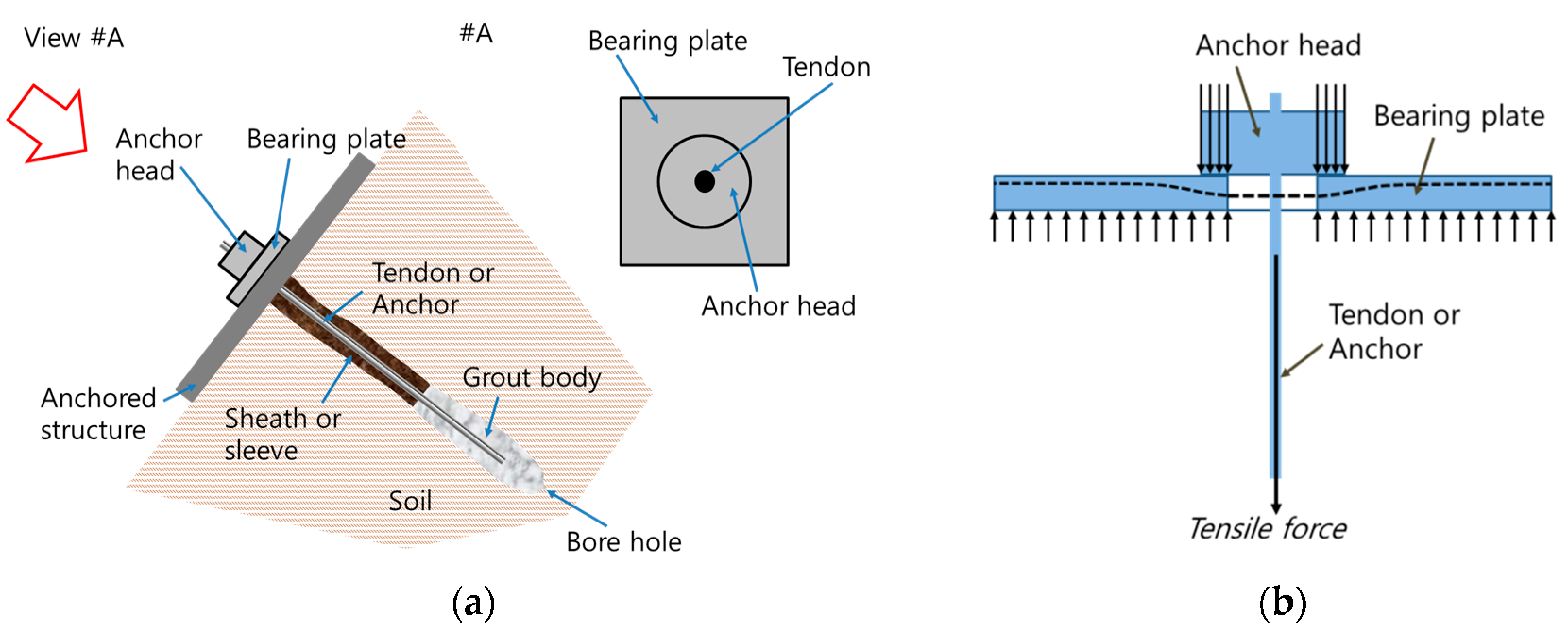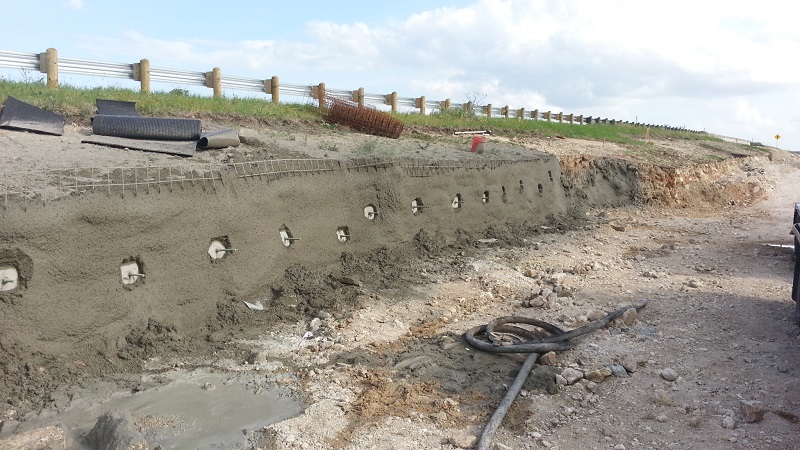Just How Durable Earth Anchors Work: A Comprehensive Guide to Dirt Anchoring Solutions
Durable Earth anchors play a crucial duty in giving stability and assistance in different building applications. By installing deeply right into the ground, they withstand vertical and side forces effectively. Different kinds of supports accommodate numerous dirt conditions, making them functional. Recognizing their technicians and setup methods is necessary for optimizing efficiency. What variables influence their effectiveness, and how do they compare to typical approaches? The responses may shock you.
Comprehending Heavy-Duty Earth Anchors
Heavy-duty Earth supports act as essential components in various building and landscaping projects, giving stability and assistance in tough dirt problems. These anchors operate by being installed right into the ground, where they withstand vertical and side pressures. Their design permits protected attachment to frameworks, guaranteeing they stay secured against dirt activity or outside loads.The efficiency of sturdy Earth supports largely depends upon the kind of soil and the anchor's installation deepness. Appropriate setup methods are critical, as they determine the anchor's holding ability. Ecological elements, such as dampness and freeze-thaw cycles, can additionally influence performance.These anchors are frequently used in applications varying from securing fencings and preserving walls to supporting short-lived structures throughout adverse weather. Understanding the principles behind durable Earth anchors is vital for experts looking for to boost the toughness and safety and security of their projects.
Kinds Of Heavy-Duty Earth Anchors
Numerous sorts of heavy-duty Earth anchors are designed to satisfy certain requirements based on dirt conditions and project demands. Helical anchors, featuring screw-like blades, work in softer soils, supplying high lots abilities and very easy installment. Driven supports, which are inculcated the ground, appropriate for rough surfaces and give instant load support. Tie-back anchors are generally used in maintaining wall applications, permitting for lateral assistance by anchoring right into the ground at an angle. An additional type is the cast-in-place anchor, suitable for concrete applications, as they are integrated right into structures for enhanced security. Soil screw anchors are functional alternatives that can be used in various soil kinds, providing dependable stress and compression capabilities. Each kind offers distinct applications, guaranteeing stability and safety and security in construction and landscaping jobs. Comprehending these choices enables for notified decisions in choosing the proper Earth anchoring service.
The Mechanics of Soil Anchoring

Comprehending the mechanics of dirt anchoring requires an examination of numerous kinds of Earth supports and their installation strategies. Each support kind presents distinct features that influence its performance in different dirt conditions. Proper installation approaches are vital for optimizing the securing system's stability and performance.
Sorts Of Earth Anchors
Earth anchors, important elements in dirt anchoring systems, been available in a number of kinds, each created for certain applications and soil problems. The most usual kinds consist of screw supports, which are turned into the ground, supplying strong side resistance. Helical supports include blades that permit for reliable setup in numerous dirt types, making them ideal for both momentary and permanent applications. Driven supports, normally made from steel, are inculcated the dirt and are reliable in rough or dense settings. Auger supports make use of a helical style to assist in installment in softer dirts. Lastly, plate anchors contain a flat plate buried horizontally, dispersing tons over a larger location, perfect for applications calling for high lots abilities in natural dirts.
Installment Strategies Discussed
Appropriate setup strategies are essential for the effectiveness of soil anchoring systems. The process commonly starts with website assessment, confirming the selected area can sustain the support's load. After establishing the correct support kind, correct opening deepness and angle should be established. The setup involves driving the anchor into the ground using specific devices, such as hands-on or hydraulic chauffeurs, to attain best embedment. Post-installation, tensioning the anchor is important to assure stability; this is typically validated with tons testing. In addition, surrounding dirt conditions ought to be monitored to protect against variation. Adhering to these methods not only boosts the support's efficiency however also lengthens its life expectancy, offering trustworthy assistance for various applications.
Applications of Heavy-Duty Earth Anchors
While sturdy Earth anchors are usually linked with construction and landscaping, their convenience includes a range of applications across different industries. In civil engineering, they give crucial assistance for preserving wall surfaces, ensuring stability in locations susceptible to soil disintegration. The aquatic field makes use of these anchors for securing anchors and marinas, avoiding movement caused by currents and trends. Additionally, in the telecommunications market, sturdy Earth anchors are significant for stabilizing cell towers and other tall frameworks against wind pressures. Agricultural applications also profit, as these supports can safeguard structures like greenhouses and livestock fence, ensuring they stand up to harsh weather. In eco-friendly energy jobs, such as wind farms, Earth supports play an essential function in securing generator structures, enhancing general safety and efficiency. This wide series of applications highlights the versatility and dependability of sturdy Earth anchors throughout different areas.
Benefits Over Typical Anchoring Approaches
Conventional anchoring approaches have long been depended upon for stability, sturdy Earth anchors provide significant benefits that improve efficiency and efficiency. One major advantage is their premium load-bearing ability, which allows them to endure better pressures without failure. This strength makes them optimal for requiring applications, such as in construction her latest blog and utility installations.Additionally, heavy-duty Earth anchors are made for much deeper installment, providing higher security in various soil problems, including loose or sandy soils. Their resistance to rust and environmental elements ensures a much longer life-span and reduced upkeep expenses contrasted to traditional methods.Moreover, these supports can be installed with very little disruption to the surrounding location, protecting the integrity of the landscape. On the whole, sturdy Earth supports present a reliable and reputable solution for anchoring requirements, surpassing the restrictions typically related to standard anchoring techniques.
Installation Process and Ideal Practices
The installation procedure for dirt anchoring solutions begins with extensive prep work and website evaluation to guarantee peak efficiency. Following this, a detailed installment overview gives clear instructions for effective execution (construction site anchors). Sticking to these best techniques is necessary for attaining trustworthy and long-lasting anchoring results
Prep Work and Site Analysis
Effective preparation and thorough site evaluation are vital action in the installation of dirt securing remedies. Before installment, the soil kind need to be evaluated to identify its bearing ability and viability for securing. Performing a geotechnical study can offer important details about soil composition, wetness levels, and prospective ground motion. Additionally, recognizing existing structures, vegetation, and energies is important to stay clear of disturbance throughout installation. The location must be free from particles and obstacles to assure secure accessibility for tools. Climate problems ought to likewise be checked, as negative problems can influence both security and setup efficiency. By thoroughly preparing the website and evaluating all relevant variables, the probability of successful support performance is significantly boosted.
Step-by-Step Installation Guide
An extensive setup process is vital for attaining optimal efficiency of dirt anchoring remedies. The installment starts with picking the suitable anchor kind and ensuring the site is clear of debris. Next off, proper opening positioning is established based on lots demands. When the area is established, holes are drilled to the defined deepness and size utilizing the appropriate devices. The anchor is then inserted right into the opening, making certain it is aligned correctly. After protecting the anchor, soil is backfilled and compacted to enhance stability. It is necessary to follow manufacturer guidelines throughout the procedure. A post-installation assessment validates that the supports are adequately located and working as planned, supplying dependable assistance for the desired application.

Maintenance and Assessment of Earth Anchors
Regular maintenance and inspection of Earth anchors are necessary for making sure long-term performance and stability. Regular checks enable the early discovery of problems such as rust, loosening up, or dirt movement. Assessors must look for indications of corrosion or degradation on the anchor parts, especially at the link points. Additionally, the bordering soil needs to be analyzed for erosion or changes in moisture web content, which can affect anchor effectiveness.It is recommended to establish a regular inspection routine, preferably a minimum of yearly, depending upon ecological conditions. Throughout inspections, all visible elements should be cleansed to remove dust or debris that can hide possible problems. Any kind of signs of distress, such as tilting structures or uncommon settling, need to trigger immediate examination. Correct documentation of assessments can help in monitoring support efficiency over time and help with prompt maintenance actions, guaranteeing the supports continue to be practical and reliable.
Frequently Asked Inquiries
What Materials Are Heavy-Duty Earth Anchors Generally Made From?
Durable Earth supports are commonly constructed from sturdy products such as galvanized steel or stainless-steel, ensuring toughness and resistance to rust. These products provide resilient assistance and security in various soil conditions and applications.
Exactly How Do Soil Conditions Impact Support Performance?
Dirt problems significantly affect anchor performance. Factors visit this web-site such as soil type, dampness content, and compaction impact the support's grip and security, with natural dirts frequently offering far better resistance than loosened or sandy soils, impacting general effectiveness.
Can Heavy-Duty Earth Anchors Be Recycled After Removal?
Heavy-duty Earth supports can be reused after removal, offered they are checked for damage and wear. Proper cleaning and maintenance enhance their durability, making sure efficient performance in succeeding setups when conditions enable safe reinstallation.
What Are the Ecological Effects of Utilizing Earth Anchors?
The ecological impacts of using Earth supports consist of prospective dirt disturbance, interruption of regional ecosystems, and feasible contamination of groundwater. If made use of properly, their advantages often outweigh these issues, promoting stability in numerous applications.
Exactly how Do I Pick the Right Anchor for My Project?

Comments on “The Hidden Reason They're Essential to Modern Projects”